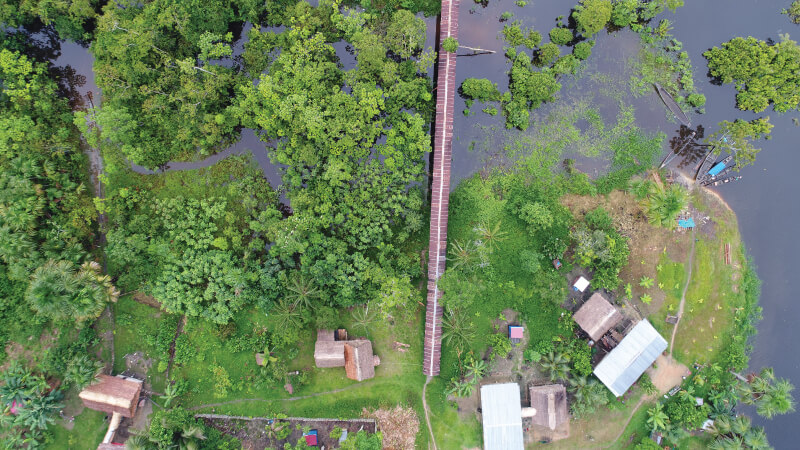Entomological Component

Objective
To determine vector biology metrics and characterize An. darlingi and its habitats in the Amazon, adult mosquitoes and larvae were collected, identified and analysed.
Methodology
Adult mosquitoes were collected using human landing catches (HLC) and the barrier screen methodology.
Adult mosquitoes were initially identified morphologically; most of the non-Anopheles darlingi are currently being identified using molecular techniques (restriction-fragment-length polymorphism-ITS2 and sequences of the barcode region).
Adult mosquitoes were analysed in the laboratory to determine whether they were infected with malaria parasites P. falciparum and/or P. vivax and to determine their blood meal source (humans or animals).
Larvae were collected and analysed together with physical-chemical characteristics of all water bodies within one kilometre of each village.

Results: Mosquito behaviour
An. darlingi was the most abundant species in each of the Peruvian and the Brazilian localities.
Peruvian villages located in the Mazán River presented higher mosquito abundance, higher An. darlingi Human Biting Rate (HBR), Entomological Inoculation Rate (EIR), and higher Human Blood Index (HBI) (greater proportions of human blood meals) than those in the Napo River. All of the villages have a common abundance peak in June, which is malaria transmission season.
Mosquito populations were more exophagic in all localities in both Peru and Brazil.
Other anopheline species identified in Peru were An. nr konderi (An. oswaldoi s.l.), Anopheles dunhami, and An. triannulatus s.l.
Of the approximately 6 300 An. darlingi examined, 1.6% were infected with the malaria parasite (Plasmodium falciparum and Plasmodium vivax).
The Entomological Inoculation Rate (EIR) was higher in Mazán River villages.
.png)
Results: Mosquito larvae
All larvae from Peru and Brazil localities are being identified molecularly.
Researchers plan to georeference malaria case data, human population data, and larval aquatic habitat data for all localities. This will allow researchers to determine any association between hotspots of cases, An. darlingi larval aquatic habitat environmental characteristics, and larval aquatic habitat distance from hotspot houses.
In Peru, microbiota signatures were specific for the larvae of different anopheline species, not for different water bodies.
Data analysis of some results is still being conducted.

